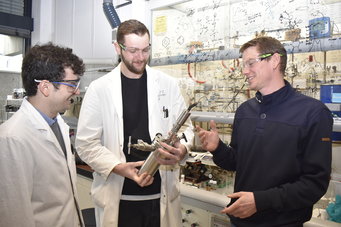An emerging capability that uses ‘non-animal models’ to evaluate novel medical products is estimated to generate over $1.5 billion in revenue and create over 5,000 jobs by 2040, a new report from CSIRO, Australia’s national science agency, has found.
Non-animal models use human-derived or humanised cells, tissues or data. Examples include ‘organoids’ and ‘organ-on-chip’ technologies and they are a valuable alternative to traditional methods involving animals.
The report, ‘Non-animal models: A strategy for maturing Australia’s medical product development capabilities’ assessed the potential of these models to complement or replace traditional approaches over the next 15 years.
Greg Williams, health and biosecurity lead at CSIRO Futures, said non-animal models are becoming increasingly sophisticated and for some applications are surpassing the performance of traditional animal models.
“Australia has the opportunity to further grow this capability and develop new revenue streams for the nation,” Mr Williams said.
“They offer the potential to better predict human responses and ‘fast fail’ medical products at an earlier stage, allowing savings to be reinvested into medical products that are more likely to succeed.”
The report’s recommendations could be applied to other fields beyond the medical product development process, such as veterinary and agricultural medicines, cosmetics testing, industrial chemicals, and eco-toxicology.
The report was developed in collaboration with industry, research and government partners including the National Health and Medical Research Council, Phenomics Australia, University of Melbourne, University of Newcastle, University of Sydney, Australian Ethical, The Medical Advances Without Animals Trust, and University of South Australia.
Read the report, Non-animal models: A strategy for maturing Australia’s medical product development capabilities.







